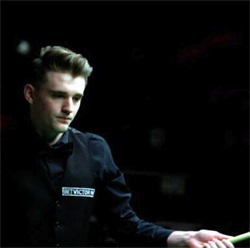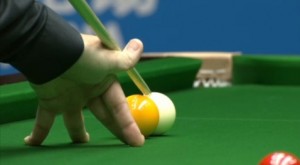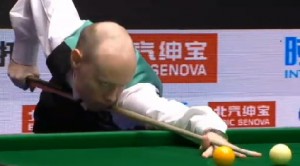
It feels like yesterday that World Snooker announced that new tour players would earn a two-year professional card, instead of just the one which had been the norm up until that point, but in fact the 2015/16 season marks the fourth season that the current system has been in place.
That means that we have now seen two waves of players to have been awarded the two-year cards, but just what sort of a difference have the extended cards made and have they made it easier for new players to break into the top 64 of the world rankings at the end of the two years?
Today then I take a look at how new professionals have fared in recent years and consider some of the other knock-on effects of the introduction of two-year cards and changes to the tour generally…
The Two Years
As mentioned above, we have now seen two completed cycles of ‘two-year’ cards, eg those who began in 2012/13, finishing them at the end of the following season, and those who began in 2013/14 and completed their cards at the end of 2014/15.
2012-2014
Of the 35 players to have started the 2012/13 season on the first year of a two-year card, the following nine players (with ranking and how they originally earned their tour cards detailed), were able to break into the top 64 and retain their tour cards at the end of their two year card:
- Kurt Maflin (34) – PTC List
- Rod Lawler (39) – Q School
- Cao Yupeng (46) – China Nomination
- Dechawat Poomjaeng (47) – PTC List
- Aditya Mehta (49) – Indian Nomination
- Pankaj Advani (56) – Asian Nomination
- Thepchaiya Un-Nooh (59) – Thailand Nomination
- Robbie Williams (62) – Q School
- Luca Brecel (63) – European Nomination
A year on and the number of players is down to seven, from the 36 who began their two-year cards in 2013/14:
- Gary Wilson (34) – PTC List
- David Morris (51) – Q School
- Li Hang (55) – APTC List
- Kyren Wilson (56) – PTC List
- Robin Hull (61) – European Champion
- Stuart Carrington (63) – EBSA Play-Offs
- Joe Swail (64) – PTC List

2010-2012
How do those numbers compare to the preceding two seasons, before the days of two-year cards, when starter points and ranking points rather than a money list was used to determine the ranking list?
Excluding players who survived via the PTC Order of Merit and so retained their previous year’s points, at the end of the 2011/12 season only four of the 27 new players that term were able to break into the top 64:
- David Gilbert (57) – Q School
- Yu Delu (58) – Wildcard
- Adam Duffy (62) – Q School
- James Wattana (63) – Wildcard
A year prior to that, six of the 24 were able to do so:
- Jack Lisowski (52) – PIOS
- Anthony McGill (59) – PIOS
- Jamie Jones (47) – PIOS
- Alfie Burden (57) – IBSF World Champion
- Liu Chuang (60) – Asian U-21 Champion
- Xiao Guodong (64) – Wildcard
At first glance, perhaps the surprising point to note is that since two-year tour cards have come into operation, the number of players breaking into the top 64 has not increased as dramatically as might have been expected.
Of course, although ‘new’ players now have the advantage of a guaranteed two years on tour, they are now required to start on zero points, rather than being awarded ‘starter’ points as used to be the case. This means that combined with the now common flat 128 draw structures at full ranking events, they are now all but certain to face a difficult opening match against a top 64 player for at least the first 18 months of their tour card.
Aiming Higher
On the other hand, it can be argued that the most obvious difference during the last couple of seasons is that while there have been in relatively similar amount of players who have been able to break into the top 64 after two years, during the last couple of seasons a number of these players have been able to do so more convincingly, pushing into the top 48 rather than just sneaking into the top 64.

To some extent this is a consequence of the switch to a prize money based ranking list, which has enabled lower ranked players to make a more significant jump up the rankings (and therefore take advantage of a higher seeding more immediately), at events than they would have in years gone by.
Rookie challenge
Another interesting conclusion that screams out from the above lists is that barely any of the above players who have been able to gain a top 64 place at the end of their maiden two year card, indeed only two during the previous couple of seasons (Robbie Williams and Pankaj Advani), have been first-time professionals.
Even those two players were far from newcomers to the game when they joined the main tour, which shows how difficult it is for the younger players on the tour to establish themselves as professionals at the first attempt.
Many will of course have the aim of breaking into the top 64 after two years as their goal, as of course they should as professional sportsmen with the self-belief in their ability that is required to succeed, but it is far from a disgrace if they are unable to do so.
The ‘PTC’ Route
As we have seen in recent seasons, a far more realistic avenue in practice for young players to stay on the tour at their first attempt has proven to be that of the European and in the case of Ross Muir this year, the Asian Order of Merit.
This way, the players are able to almost use their first season as a learning experience, getting to grips with what life as a professional entails, before then looking to win as many matches possible during the following term’s European and Asian events.

If all goes to plan, they are then able to earn a fresh two-year card, allowing them a clean start on the ranking list, but armed with two years of priceless experience as a professional and a platform to push for a top 64 place at the second attempt. The likes of Joel Walker and James Cahill spring to mind in this category and I have a suspicion that Steven Hallworth could be another during the coming months.
In recent seasons the race for these tour spots has become a crucial battleground that runs in the background of the tour’s satellite events, but it will be interesting to see how this is replaced if the European Tour is to be scaled back as has been suggested.
Nominations
On another note, the system of international nominations is something that often comes under fire from fans on social media, so it is interesting to see that in fact a healthy number of such nominations have been able to establish themselves on tour.
Indeed to me it is surprising to see that relatively few Q School graduates have been able to crack the top 64, even compared to those from the last year of the PIOS. That said, while tempting to argue that the PIOS helped to bring through a stronger set of players, in reality that final group including Anthony McGill and Jack Lisowski was probably an exceptionally strong one.
I perhaps go slightly against the grain on this one, but I do believe that the vast majority of the different nominations, including the Americas and Asian nominations, have at times produced players who have been a worthy addition to the tour.
128 Man Tour – does it work?
One consequence of the two-year cards is that in order to allow for those players to remain on tour for an extra year, whilst still ensuring that new players are able to join them on the circuit on an annual basis, the size of the tour has been expanded from 96 to 128 players.

This is of course a good thing in that it ties in well with the recent move to flat 128 draws, but has led to suggestions that there are now perhaps too many players on tour, both in terms of ability and also for the tour to sustain from a financial point of view.
In many respects I probably do think that 128 is too many, but at the same time think it is a difficult problem to address while at the same time providing for two year cards and allowing a good number of amateurs the chance to turn professional on an annual basis.
Final Thoughts
So all of that said, can we say that the introduction of two-year cards, combined with the other changes to the tour structure in recent seasons been a success? Has it made it easier for tour newcomers to establish themselves on tour and to make significant strides up the world ranking list, as was expected at the time?
Of course for those players who have something extra special, they will always find their way to the top, regardless of the system in place. Look at Mark Allen, who under the old ‘unfair’ system was able to break into the top 16 within just three seasons.
While on paper all of the players now come into events at the same round, rather than lower ranked players having to come through qualifying just to make it to the venues, I do think that in many ways their task is probably even more difficult now, given the calibre of opposition that they have to face from their opening match. At least previously those extra qualifying rounds pitted tour newcomers up against each other, so they had a better chance to get wins under their belt.
I also think that compared to when the system was first introduced a few seasons ago, the established top players are perhaps wiser to and better prepared for the pitfalls than they were and that was certainly reflected in the fact that there were fewer first round upsets at the UK Championship last season than there had been the previous year.
 With the prize money based ranking list being fundamentally different from the old list in rewarding players who are able to win multiple matches in ranking events, rather than for example winning their first round matches on a consistent basis, these days a ‘solid’ and ‘consistent’ season is unlikely to be good enough.
With the prize money based ranking list being fundamentally different from the old list in rewarding players who are able to win multiple matches in ranking events, rather than for example winning their first round matches on a consistent basis, these days a ‘solid’ and ‘consistent’ season is unlikely to be good enough.
Notwithstanding that, for those who are able to shine from the off, something that is undoubtedly easier for those who have had previous tour experience, there is a far greater opportunity to rise up the rankings than under previous systems, just look at Gary Wilson who this week broke into the top 32 for the first time in his career, just two years after getting back on tour.
We shall see what this year will bring, will the likes of Oliver Lines and Zhou Yuelong be able to follow up on their impressive rookie seasons to finish inside the top 64? They look to have every chance based on the current provisional end of season list, but remember that they will face tougher draws again this season than those still above them in the top 64 of the real ranking list.
What do you think? Have the introduction of two-year tour cards and the other changes to the tour been a success? Let me know in the comments section below.
